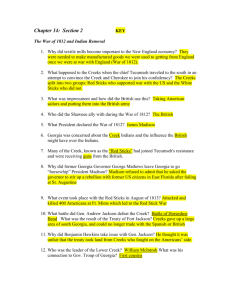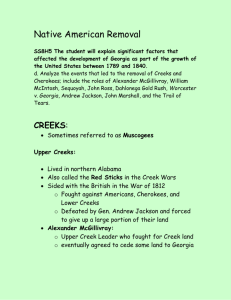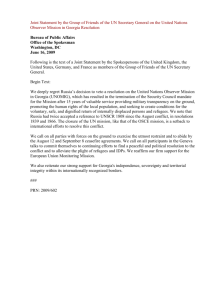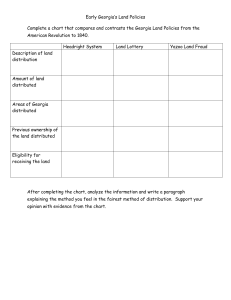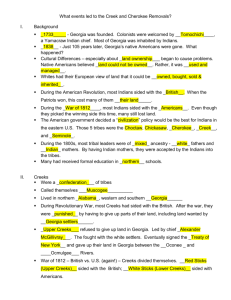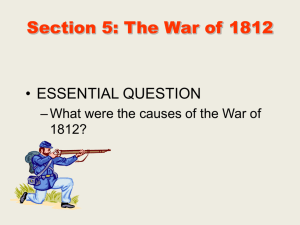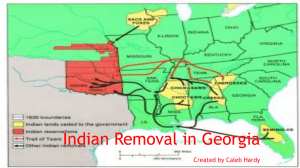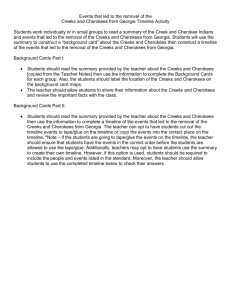UNIT 4 TEST STUDY GUIDE: Complete on your own paper
advertisement
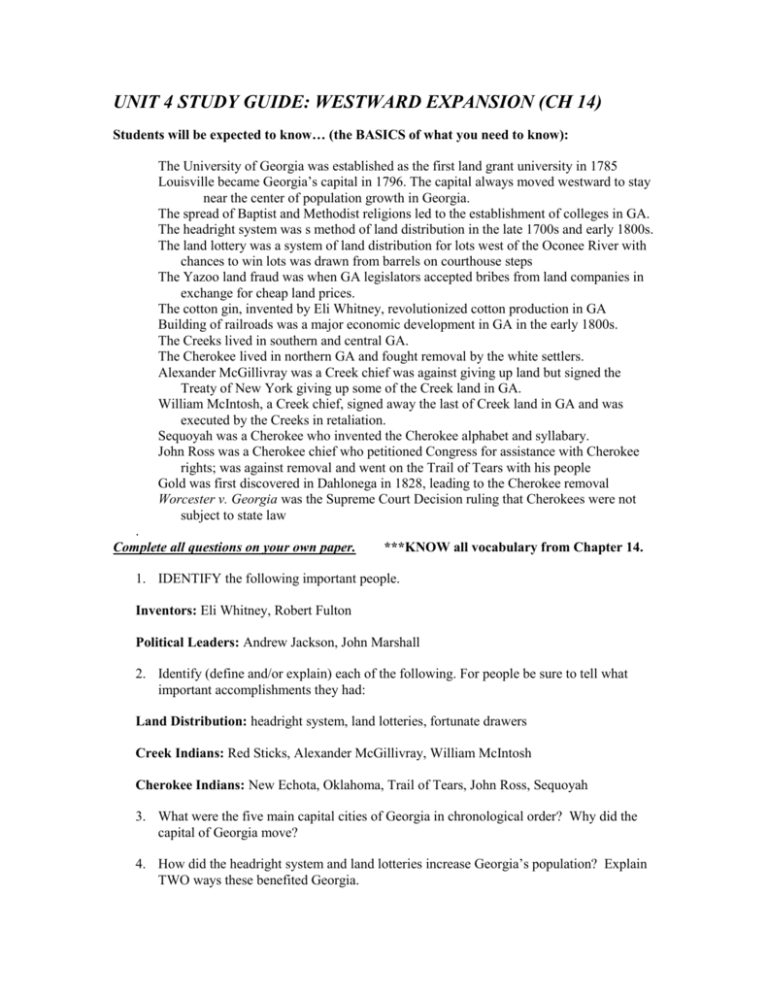
UNIT 4 STUDY GUIDE: WESTWARD EXPANSION (CH 14) Students will be expected to know… (the BASICS of what you need to know): The University of Georgia was established as the first land grant university in 1785 Louisville became Georgia’s capital in 1796. The capital always moved westward to stay near the center of population growth in Georgia. The spread of Baptist and Methodist religions led to the establishment of colleges in GA. The headright system was s method of land distribution in the late 1700s and early 1800s. The land lottery was a system of land distribution for lots west of the Oconee River with chances to win lots was drawn from barrels on courthouse steps The Yazoo land fraud was when GA legislators accepted bribes from land companies in exchange for cheap land prices. The cotton gin, invented by Eli Whitney, revolutionized cotton production in GA Building of railroads was a major economic development in GA in the early 1800s. The Creeks lived in southern and central GA. The Cherokee lived in northern GA and fought removal by the white settlers. Alexander McGillivray was a Creek chief was against giving up land but signed the Treaty of New York giving up some of the Creek land in GA. William McIntosh, a Creek chief, signed away the last of Creek land in GA and was executed by the Creeks in retaliation. Sequoyah was a Cherokee who invented the Cherokee alphabet and syllabary. John Ross was a Cherokee chief who petitioned Congress for assistance with Cherokee rights; was against removal and went on the Trail of Tears with his people Gold was first discovered in Dahlonega in 1828, leading to the Cherokee removal Worcester v. Georgia was the Supreme Court Decision ruling that Cherokees were not subject to state law . Complete all questions on your own paper. ***KNOW all vocabulary from Chapter 14. 1. IDENTIFY the following important people. Inventors: Eli Whitney, Robert Fulton Political Leaders: Andrew Jackson, John Marshall 2. Identify (define and/or explain) each of the following. For people be sure to tell what important accomplishments they had: Land Distribution: headright system, land lotteries, fortunate drawers Creek Indians: Red Sticks, Alexander McGillivray, William McIntosh Cherokee Indians: New Echota, Oklahoma, Trail of Tears, John Ross, Sequoyah 3. What were the five main capital cities of Georgia in chronological order? Why did the capital of Georgia move? 4. How did the headright system and land lotteries increase Georgia’s population? Explain TWO ways these benefited Georgia. 5. What was the Yazoo Land Fraud? Why was it a scandal? What was the final result (what did GA give up and get in t)? What was the capital when it happened? 6. What group of people were at the TOP of the class system in Georgia? 7. Explain these THREE factors that encouraged economic growth in Georgia (include what they did and how they contributed to the growth of Georgia and its economy): (A) cotton gin (B) railroads (C) steamboats. 8. How did the cotton gin increase Georgia’s reliance on slave labor? How did the cotton gin cause Georgia to heavily rely on railroads? 9. Name FOUR Georgia cities that were placed on the fall line. 10. Why did cities develop on the Fall Line (why were they put there)? 11. Define cede and cession. 12. Why were the “Five Civilized Tribes” called that? 13. Which TWO of the “Five Civilized Tribes” lived in what is now Georgia? What were the other THREE “Five Civilized Tribes”? 14. Explain TWO economic reasons why many Georgians wanted Native Americans removed. 15. What was the result of the Red Stick/Creek War? Who led the Americans against the Red Sticks? 16. What was the Indian Removal Act of 1830? 17. Name at least 4 ways Cherokees were most like white Americans. 18. What was the Supreme Court decision in Worcester v. Georgia? Who was Chief Justice? How did Andrew Jackson react to the decision? 19. What LEGAL reason did Georgia have for not recognizing the Cherokee government? 20. How did the gold rush lead to Cherokee removal? 21. Contrast the Lower Creeks and the Red Sticks (Upper Creeks). 22. How was the Treaty of Indian Springs (Creek Cession Treaty) related to the death of William McIntosh? 23. What was the Treaty of New Echota? What THREE Cherokee leaders were executed for signing it? 24. How was the Treaty of New Echota related to the Trail of Tears?


